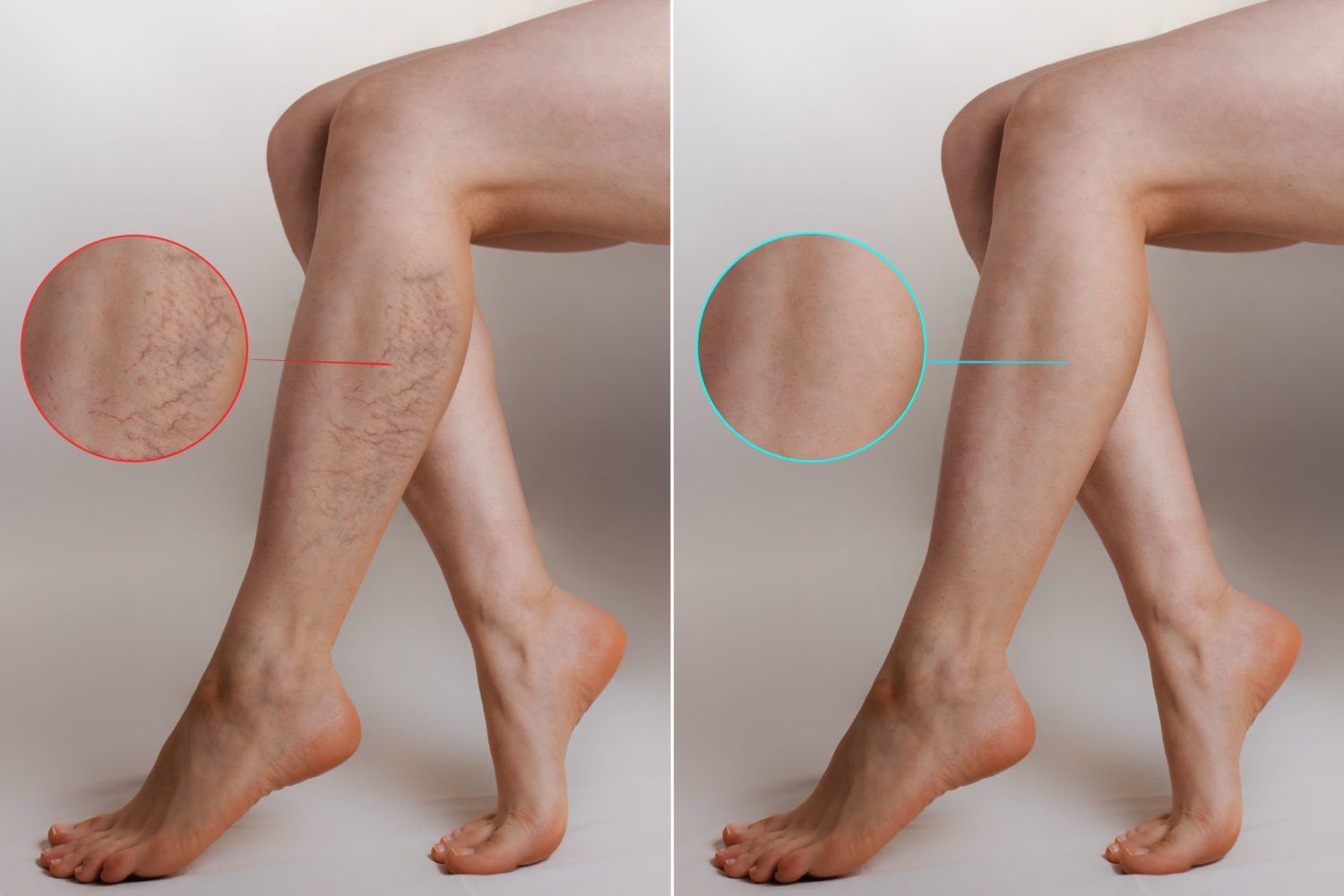1. What is sclerotherapy? Sclerotherapy is a medical procedure used to treat varicose and spider veins. It involves the injection of a special solution (sclerosant) directly into the affected veins, causing them to collapse, seal shut, and eventually fade from view.
2. How does sclerotherapy work to treat varicose and spider veins? Sclerotherapy works by irritating the inner lining of the targeted veins, leading to their closure and absorption by the body. Blood flow is rerouted through healthier veins.
3. Is sclerotherapy painful? Most patients experience minimal discomfort during sclerotherapy. The injection needles are very fine, and any discomfort is usually brief and mild.
4. Are there any risks or side effects associated with sclerotherapy? Sclerotherapy is generally safe but may have mild side effects, including bruising, swelling, redness, or itching at the injection site. Serious complications are rare and should be discussed with your healthcare provider.
5. How long does a sclerotherapy session typically take? A sclerotherapy session usually takes 30 minutes to an hour, depending on the number of veins being treated.
6. How many sclerotherapy sessions are usually needed to see results? The number of sessions required varies, but many patients see significant improvement after one to three sessions.
7. How soon can I expect to see results after a sclerotherapy treatment? You may start to notice results within a few weeks, but it may take several months for the treated veins to fade completely.
8. Is there any downtime or recovery period after sclerotherapy? Sclerotherapy typically requires no downtime. You can resume your normal activities immediately after the procedure.
9. Can I return to normal activities immediately after a sclerotherapy session? Yes, most individuals can return to their regular activities right after a sclerotherapy treatment.
10. Are there any restrictions on physical activities after sclerotherapy? Strenuous exercise and prolonged sun exposure should be avoided for a few days following the procedure.
11. Who is a suitable candidate for sclerotherapy? Suitable candidates include those with varicose or spider veins seeking cosmetic improvement or relief from associated symptoms. A consultation with a healthcare provider will determine candidacy.
12. What types of veins can be treated with sclerotherapy? Sclerotherapy is effective for treating both small spider veins and larger varicose veins.
13. Are the results of sclerotherapy permanent? Sclerotherapy can provide long-lasting results, but new veins may develop over time, requiring occasional touch-up treatments.
14. Are there any lifestyle changes or post-treatment care recommendations for sclerotherapy? Wearing compression stockings and maintaining a healthy lifestyle can help support the results and prevent new vein issues.
15. Does health insurance typically cover the cost of sclerotherapy? Insurance coverage varies. While cosmetic procedures are usually not covered, treatments for symptomatic varicose veins may be eligible for coverage.
16. What is the cost of sclerotherapy, and does it vary by location? The cost varies by location and provider but can range from a few hundred to a few thousand dollars per session.
17. How long has sclerotherapy been used as a vein treatment? Sclerotherapy has been used for several decades and has evolved with advancements in medical techniques and technology.
18. Are there alternative treatments for varicose and spider veins? Yes, alternatives include laser therapy, radiofrequency ablation, and surgical procedures. Consultation with a healthcare provider can help determine the most suitable treatment for your condition.
19. Can sclerotherapy be used to treat veins in different parts of the body? While sclerotherapy is most commonly used to treat leg veins, it can be used to treat veins in other areas of the body as well.
20. Are there any age restrictions for undergoing sclerotherapy? Sclerotherapy is generally safe for adults, but the suitability of the treatment depends on an individual’s specific medical condition and needs. Consultation with a healthcare provider is essential to determine eligibility.
Please note that individual experiences may vary, and it’s important to consult with a qualified healthcare provider or vein specialist for personalized information and guidance regarding sclerotherapy.










